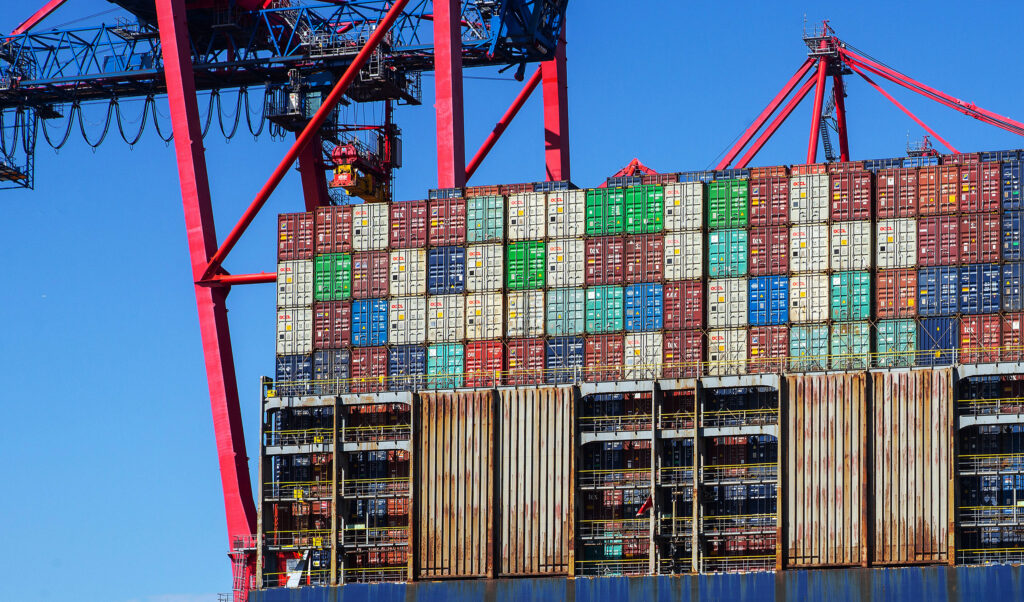Dangerous goods in the children’s room. Why toys are increasingly appearing on dangerous goods lists.

Increasingly, not only consumer advocates but also safety experts in the logistics industry are warning against dangerous toys. This often involves cheap toys made in China. The gateway for dangerous toys is the de minimis rules or the import rules for low-value shipments, i.e. for goods that are smuggled past customs controls.
Electronic waste as dangerous goods

Electronic waste, also known as e-waste or electronic scrap, contains numerous hazardous chemical substances such as lead, mercury, cadmium and brominated flame retardants. These substances are classified as hazardous substances as they are toxic and can cause serious health problems in humans if they come into contact with them.
IMDG has tightened the transport conditions for the dangerous goods charcoal

In the seven years between 2015 and 2022, at least 68 fires were documented on ships that were caused by the transportation of charcoal. The International Maritime Organization IMO has now reacted and made important changes to the IMDG Code. In future, charcoal must be declared and transported as class 4.2 dangerous goods without exception.
Innovations and investments in dangerous goods logistics

Digitalization is progressing. In many ways, the dangerous goods logistics sector is following the trends already familiar from other industrial sectors. The focus is on electronic documentation, virtual training and paperless regulations. Sustainability and the avoidance of false declarations are important topics.
The market for dangerous goods logistics is growing significantly

The global dangerous goods logistics market will grow by an average of 5.6% every year between 2024 and 2032. This is the result of a recent study by the experts at Global Market Insights. This would mean that global sales of dangerous goods in the logistics market would grow from USD 237.3 billion to USD 374 billion during this period.
EPCA – ANIQ – APLA: It’s meeting time for the international chemical industry in fall 2024

Decision-makers from the chemical industry will be meeting at three major international trade conferences in the coming months: the EPCA in Berlin, the ANIQ Foro Nacional de la Industria Química in Mexico City and the APLA Meeting in Cartagena.
Cargo Integrity Group publishes list of cargoes of concern that can compromise supply chain safety

A few days ago, the Cargo Integrity Group, an initiative of the International Cargo Handling Coordination Association – ICHCA, published a list of 15 “cargoes of concern” that are normally transported in containers and whose hazardous nature is not always so obvious, such as the potential danger of lithium-ion batteries. For example, the list contains important information on the flammable properties of seed cakes or the dangers associated with cocoa butter or vegetable oils.
IATA presented additions to its dangerous goods regulations at the end of April

On April 30, 2024, the International Air Transport Association IATA published additions and corrections to the 65th edition of the IATA Dangerous Goods Regulations (DGR). The changes mainly relate to the transportation of aerosols and radioactive substances, as well as the transportation of battery-powered mobility aids such as wheelchairs on aircraft. A new annex provides information for the first time on planned innovations for 2025 and 2026. After all, it is about future technologies such as the safety of sodium-ion batteries.
More security in RAS Cargo thanks to important procedural changes

There are important current changes in RAS-Cargo, which I will present below. France has taken on a pioneering role here. It is about changes that will increase the safety of air freight transportation in the future. After all, a not inconsiderable proportion of dangerous goods transported worldwide are now transported by air.
New ECHA CHEM online database launched

The European Union has been taking care of the central collection of chemicals since 2016. The European Chemicals Agency ECHA has set up a central online platform for this purpose. It lists all registered substances and also provides a lot of additional information on handling chemicals. However, after six years, the underlying technical platform was no longer able to cope with the enormous data volumes of more than 360,000 chemicals. That is why the European Chemicals Agency announced a new system as early as 2022. The new version went online a few weeks ago, specifically on January 30, 2024.
